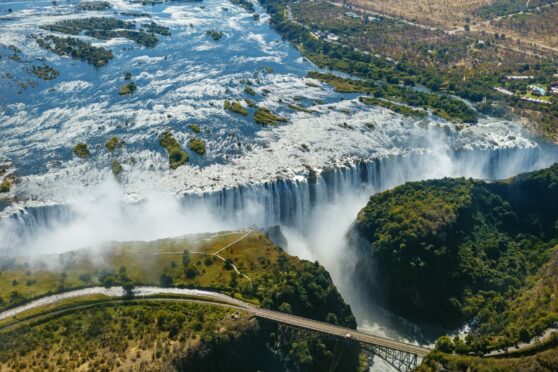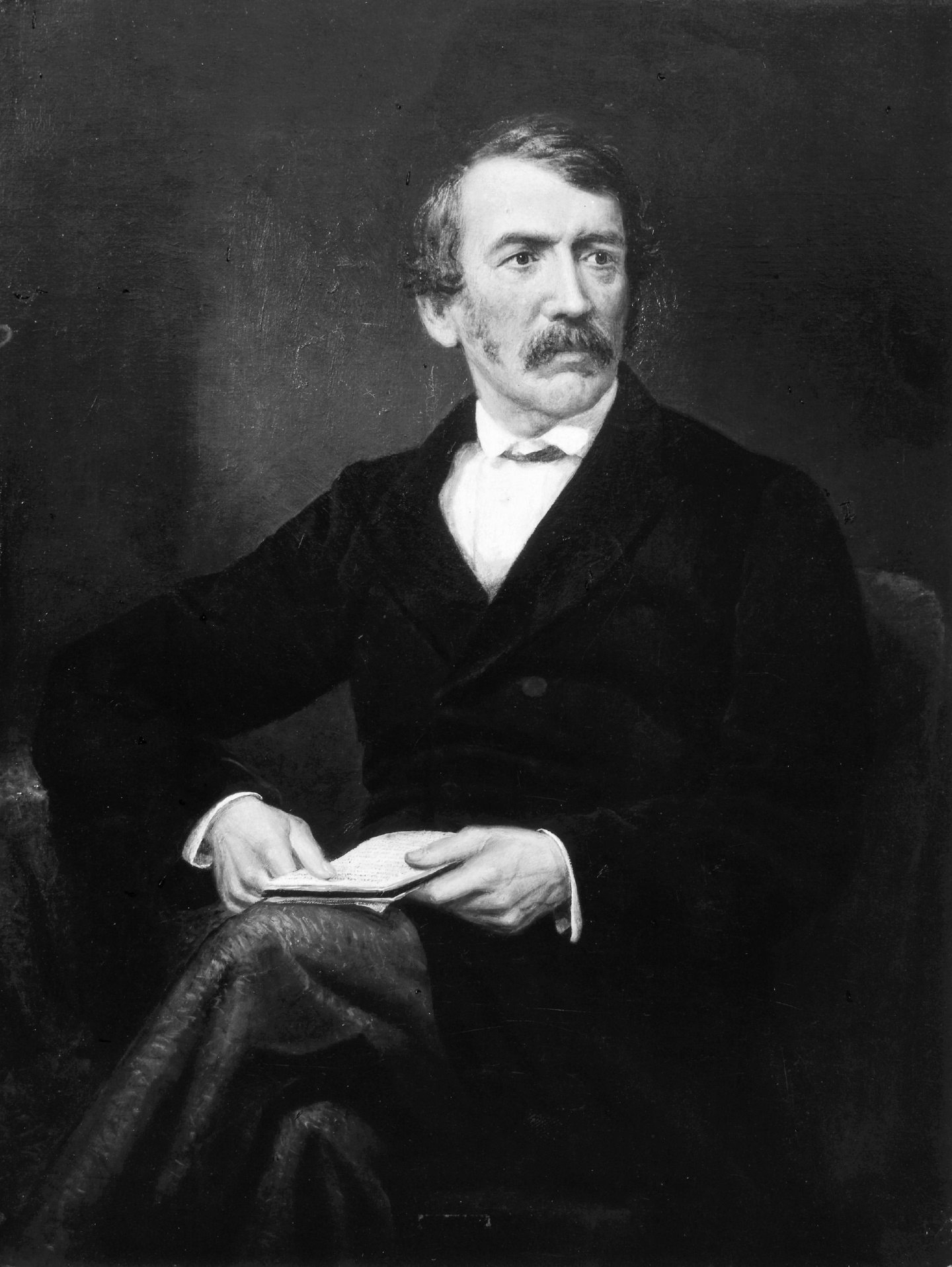
After David Livingstone battled his way along the Zambezi River in a fleet of canoes, he finally set eyes on the Victoria Falls, which he said was the “greatest sight in Africa”.
The Scot was astonished by the world’s largest sheet of falling water – known locally as The Smoke That Thunders – which tumbles more than 100m into the Zambezi gorge between Zimbabwe and Zambia.
Plumes of spray can be seen more than 30 miles away. And the spectacular waterfall has drawn millions of holidaymakers over the years to admire this stunning view. However, conservationists say this extraordinary phenomenon is under threat from tourist projects that could spoil the biosphere and harm the wildlife.
The Falls divide Zimbabwe and Zambia, but both countries appear complicit in plans to expand hotels, a golf course and other tourist projects on this Unesco World Heritage Site.
On the Zambian side, a 300-bed hotel and a golf course are under construction. Meanwhile, elephants have reportedly been shot at by guards to repel them from their traditional route.
Over in Zimbabwe a restaurant is planned. At Cataract Island, which is an environmentally sensitive rock, planners want to create a place for tourists to take selfies in the Devil’s Pool. Adventurous tourists often take a dip in the Devil’s Pool which, when the water level is right, allows them to paddle on the edge of the Falls without getting swept over.
Any tourist development would breach the obligations of Zimbabwe and Zambia to preserve the area as a World Heritage Site, a status granted by Unesco in 1989.
This status is monitored by its World Heritage Committee, which has powers to remove it, and in its most recent public report expressed its “utmost concern” over the expansion of tourism at the Falls.
In 2007, a similar plan to expand tourism facilities was halted when Unesco made it plain it would withdraw the heritage status, which adds much to the geographical feature’s standing as a tourist destination.
Now critics worry it is not certain these threats will halt the march of the developers and question why governments on either side of the border have allowed these plans to go ahead. Bruno De Leo, chairman of the Victoria Falls Wildlife Trust, told the Sunday Post: “From a conservationist’s perspective, growth in and around wildlife areas increases the human-animal conflict cases and deforestation.
“In the case of Victoria Falls, growth is inevitable and needs to be carefully considered and planned to ensure that the Falls, natural forests and animals that tourists specifically come to see are not sacrificed in the quest for commercial gain.”
A petition against the plans is growing fast. However, environmental impact assessments have not been fully followed by the authorities in the two countries that share responsibility for the Zambezi where it forms their international border.
“Grave concern exists that a tourism company apparently has now obtained access to the unspoilt Cataract Island, an activity that has been strongly opposed,” Larry Norton, an acclaimed Zimbabwean artist, said. “Some years ago, a petition against this drew some 17,000 signatures in opposition to exploitation and commercialisation of this unique island.”
Since Livingstone’s day, when the explorer and missionary described the river below as “God’s highway”, a hydro-electric power station, a bungee-jump platform and a road and rail bridge have all been built.
But the 1.8km-wide torrent has created a pocket of rainforest-like biodiversity. Away from the Falls, there is only scrubland on an evolving basalt rock structure.
The Falls – Mosi-oa-Tunya or the “smoke that thunders” – were added to the Unesco World Heritage based on its “unique geomorphic formation and remarkable natural beauty”.
In its report last year, the World Heritage Committee said its request for Zambia to abandon construction within the protected area was being ignored.
Plans to expand the hotel were shelved in 2007 after objections, however, it is not clear why Zambia has decided to proceed with the same plans despite fresh objections.
The proposal to expand tourist facilities on Cataract Island have been given the go-ahead. At present, tourists already pay £136 to be ferried out to the island to have a picnic and a swim on the edge of the Falls.
No public consultation process was followed in Zimbabwe about the possible impact of more visitors walking around the island, which is regarded as a unique rainforest biome because of the permanent spray from the Falls. And work has now begun on a restaurant on the Zimbabwean side.
Alarmed at the progress of the development, a working party from the World Heritage Committee visited Victoria Falls in February and was expected to publish its findings in June.
However, the report has been delayed until autumn because it was due to be hosted in Russia but the present conflict in Ukraine made this difficult.
There is concern that both governments on either side of the border are trying to quietly shrink the heritage site.
The Sunday Post attempted to put these concerns to the Zambian and Zimbabwean governments through their UK embassies but received no response.

Enjoy the convenience of having The Sunday Post delivered as a digital ePaper straight to your smartphone, tablet or computer.
Subscribe for only £5.49 a month and enjoy all the benefits of the printed paper as a digital replica.
Subscribe